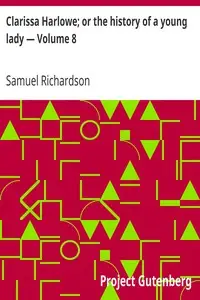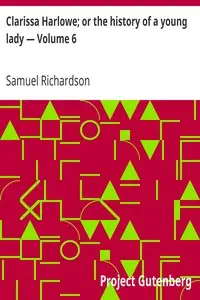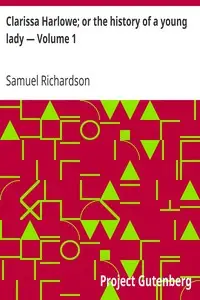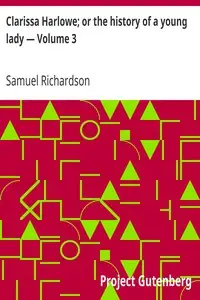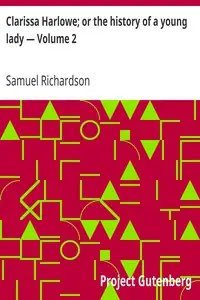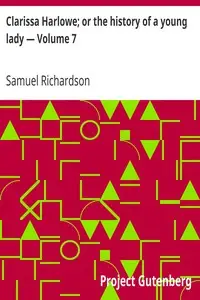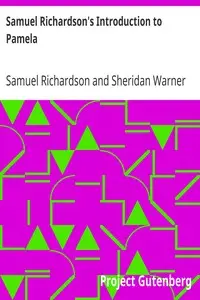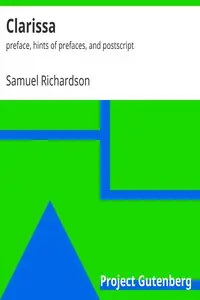"Clarissa Harlowe; or the History of a Young Lady — Volume 5" by Samuel Richardson is a novel from the 1700s that keeps unfolding the story of Clarissa Harlowe, and the troubles she faces. The story tells a complex plot of love, lies, and what people thought was right in society, which is shown through Clarissa's confusing feelings for Lovelace, and her issues with her own family. The book gets started with letters that reveal how Clarissa, Lovelace, and the people around them are changing. Lovelace's letters demonstrate his tricky plans and strong wants, while Clarissa struggles with her feelings for him, and worries about what is right and wrong, and what society expects from her. The rising tension is clear as Lovelace tries to get Clarissa to trust him, setting the scene for the difficult times she will face in this deep story of what is good versus what is bad.
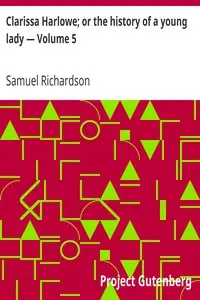
Clarissa Harlowe; or the history of a young lady — Volume 5
By Samuel Richardson
Bound by duty and desire, a young lady finds herself ensnared in a web of manipulation and deceit and must battle against a cunning gentleman and society.
Summary
About the AuthorSamuel Richardson was an English writer and printer known for three epistolary novels: Pamela; or, Virtue Rewarded (1740), Clarissa: Or the History of a Young Lady (1748) and The History of Sir Charles Grandison (1753). He printed almost 500 works, including journals and magazines, working periodically with the London bookseller Andrew Millar. Richardson had been apprenticed to a printer, whose daughter he eventually married. He lost her along with their six children, but remarried and had six more children, of whom four daughters reached adulthood, leaving no male heirs to continue the print shop. As it ran down, he wrote his first novel at the age of 51 and joined the admired writers of his day. Leading acquaintances included Samuel Johnson and Sarah Fielding, the physician and Behmenist George Cheyne, and the theologian and writer William Law, whose books he printed. At Law's request, Richardson printed some poems by John Byrom. In literature, he rivalled Henry Fielding; the two responded to each other's literary styles.
Samuel Richardson was an English writer and printer known for three epistolary novels: Pamela; or, Virtue Rewarded (1740), Clarissa: Or the History of a Young Lady (1748) and The History of Sir Charles Grandison (1753). He printed almost 500 works, including journals and magazines, working periodically with the London bookseller Andrew Millar. Richardson had been apprenticed to a printer, whose daughter he eventually married. He lost her along with their six children, but remarried and had six more children, of whom four daughters reached adulthood, leaving no male heirs to continue the print shop. As it ran down, he wrote his first novel at the age of 51 and joined the admired writers of his day. Leading acquaintances included Samuel Johnson and Sarah Fielding, the physician and Behmenist George Cheyne, and the theologian and writer William Law, whose books he printed. At Law's request, Richardson printed some poems by John Byrom. In literature, he rivalled Henry Fielding; the two responded to each other's literary styles.

